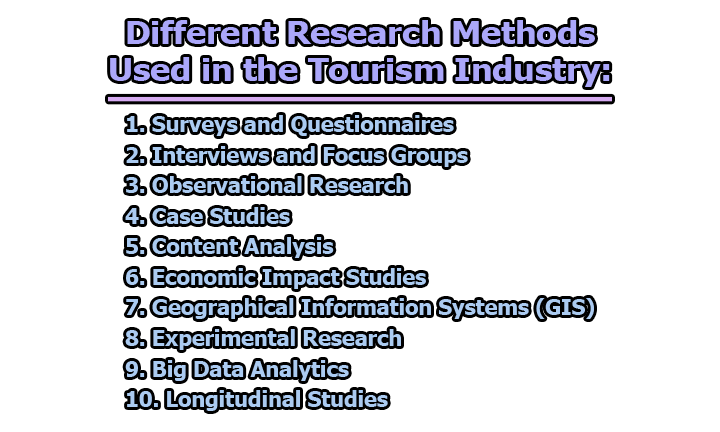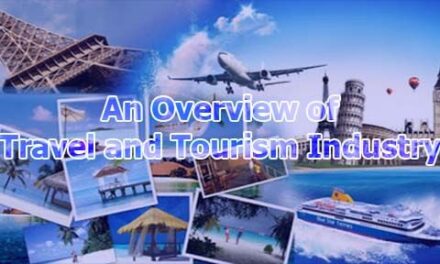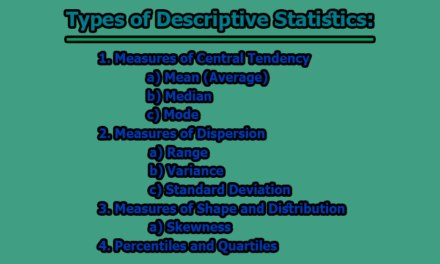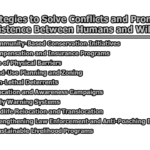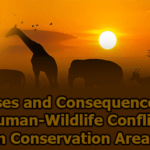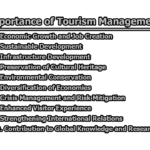Different Research Methods Used in the Tourism Industry:
The tourism industry, a dynamic and ever-evolving sector, relies heavily on research methods to decipher market trends, consumer behavior, and destination preferences. These research endeavors are not only crucial for shaping effective marketing strategies but also for improving services and fostering sustainable tourism development. In this article, we delve into the different research methods used in the tourism industry, highlighting their significance and impact on the sector’s growth.
1. Surveys and Questionnaires (Unlocking the Quantitative Dimensions of Tourism Insights):
Surveys and questionnaires have long been stalwarts in the arsenal of research methods employed by the tourism industry. This methodological approach is designed to systematically collect quantitative data from a wide range of respondents, shedding light on their preferences, satisfaction levels, and demographic characteristics.
Implementation Strategies:
- Online Surveys: In the era of digitalization, online surveys have become a prevalent means of reaching a vast audience. Through targeted online platforms, tourism researchers can efficiently distribute surveys to potential respondents, garnering insights from diverse geographical locations.
- In-person Interviews: While online surveys provide a broad reach, in-person interviews offer a more personalized touch. Researchers can engage with tourists directly, facilitating a deeper understanding of their experiences and preferences. This method is particularly useful in tourist hubs or attractions where direct interaction is feasible.
- Mailed Questionnaires: Traditional yet effective, mailed questionnaires are still utilized in certain contexts. This method involves sending structured questionnaires by mail to targeted individuals, allowing them to respond at their convenience. Although response rates may vary, this approach can capture insights from segments less active online.
Data Collected: Surveys and questionnaires are designed to capture a plethora of data, including:
- Tourist Demographics: Understanding the age, gender, income levels, and other demographic details of tourists is crucial for market segmentation and targeted marketing strategies.
- Travel Preferences: By exploring tourists’ preferences, such as travel destinations, activities, and accommodation choices, researchers gain insights into emerging trends and demands.
- Satisfaction Levels: Assessing the satisfaction levels of tourists provides crucial feedback for service improvement. This includes evaluating the quality of accommodation, transportation, attractions, and overall experiences.
Significance in Decision-making: The quantitative data acquired through surveys and questionnaires plays a pivotal role in shaping strategic decisions within the tourism industry:
- Market Segmentation: The demographic data collected assists in segmenting the market, allowing businesses and destinations to tailor their offerings to specific target audiences.
- Resource Allocation: Understanding tourist preferences enables stakeholders to allocate resources effectively. For instance, if a destination attracts a younger demographic, investments in adventure sports or nightlife may be prioritized.
- Marketing Strategy Development: Insights into satisfaction levels and preferences guide the development of marketing strategies. Highlighting aspects that resonate positively with tourists can be emphasized in promotional campaigns.
Challenges and Considerations: While surveys and questionnaires offer a wealth of quantitative data, there are challenges to consider:
- Sampling Bias: Depending on the distribution method, certain demographic groups may be overrepresented or underrepresented, leading to sampling bias.
- Response Rates: Ensuring a high response rate can be challenging, particularly in online surveys. Researchers need to employ strategies to encourage participation.
- Question Design: The effectiveness of surveys hinges on well-designed questions. Ambiguous or leading questions can compromise the validity of the data collected.
Surveys and questionnaires serve as a cornerstone in the tourism industry’s research toolkit. Whether conducted online, in person, or through traditional mail, the quantitative insights derived from this method contribute significantly to informed decision-making, market segmentation, and the continuous improvement of tourist experiences. As technology evolves, integrating innovative approaches within this methodological framework will be crucial for maintaining its efficacy in understanding and adapting to the dynamic tourism landscape.
2. Interviews and Focus Groups (Unveiling Qualitative Nuances in Tourist Perspectives):
In the realm of tourism research, interviews and focus groups stand as indispensable tools for delving into the qualitative dimensions of tourist experiences, motivations, and opinions. While surveys and questionnaires provide valuable quantitative data, interviews and focus groups offer a deeper, more nuanced understanding of the factors influencing travel decisions.
Interviews:
- Depth of Exploration: Unlike surveys, interviews allow for in-depth exploration of the thoughts and experiences of individual tourists. Researchers can tailor questions based on responses, leading to richer and more detailed insights.
- Personal Connection: Engaging in one-on-one interviews establishes a personal connection with the respondent. This can encourage tourists to share personal anecdotes and perspectives, shedding light on the emotional and psychological aspects of their travel experiences.
- Flexibility: Interviews offer flexibility in terms of timing and location. Whether conducted in-person, over the phone, or through video calls, this method accommodates the diverse preferences and schedules of respondents.
Focus Groups:
- Interactive Dynamics: Focus groups introduce an interactive dynamic by bringing together a small, diverse group of participants. This setting encourages the exchange of ideas, allowing researchers to observe group dynamics and the influence of social interactions on opinions.
- Group Synergy: Participants in focus groups often build upon each other’s responses, creating a synergy that can reveal shared sentiments or differing perspectives within a particular demographic or segment.
- Exploration of Group Norms: Understanding group norms and shared experiences provides insights into collective decision-making processes, making focus groups particularly valuable for analyzing family or group travel dynamics.
Data Collected: Interviews and focus groups aim to uncover qualitative data that goes beyond the numerical:
- Motivations and Perceptions: Researchers can delve into the motivations behind travel decisions and explore how tourists perceive destinations, attractions, and services.
- Emotional Responses: Understanding the emotional responses of tourists allows stakeholders to tailor experiences that resonate on a deeper level, fostering loyalty and positive word-of-mouth.
- Decision-making Factors: Interviews and focus groups reveal the factors that influence decision-making, providing insights into the role of recommendations, online reviews, and other external influencers.
Significance in Decision-making: The qualitative insights derived from interviews and focus groups contribute significantly to decision-making processes within the tourism industry:
- Experience Enhancement: By understanding the emotional and experiential aspects of travel, businesses and destinations can enhance the overall tourist experience, from accommodation to activities.
- Brand Perception: Qualitative data helps shape and refine brand perception. Positive narratives from interviews and focus groups can inform marketing strategies, emphasizing aspects that resonate with tourists.
- Product Development: In-depth insights into tourist preferences aid in the development of new products or the refinement of existing ones, aligning offerings with evolving consumer expectations.
Challenges and Considerations: Despite their benefits, interviews and focus groups pose challenges that researchers need to navigate:
- Small Sample Size: The intimate nature of interviews and focus groups limits the sample size. While this yields rich insights, it may not capture the diversity present in larger populations.
- Potential for Bias: Group dynamics or the presence of an interviewer can influence responses. Researchers must be mindful of these potential biases and interpret findings accordingly.
- Resource Intensity: Conducting interviews and focus groups can be resource-intensive in terms of time and personnel. Thorough planning is necessary to maximize the value of these qualitative methods.
Interviews and focus groups serve as indispensable tools for unraveling the qualitative nuances within the tourism landscape. While surveys provide the broad strokes, these methods dive deeper into the motivations, emotions, and decision-making processes of tourists. As the tourism industry continues to evolve, integrating both quantitative and qualitative insights will be vital for staying attuned to the diverse needs and preferences of the ever-changing traveler.
3. Observational Research (Decoding Tourist Behavior Beyond Words):
Observational research in the tourism industry entails a systematic and unobtrusive observation of tourist behavior in various settings, providing valuable insights into patterns, preferences, and interactions. This method is particularly useful for understanding aspects of tourism that may not be effectively captured through interviews or surveys.
Types of Observational Research:
- Visitor Flow Analysis: Understanding how tourists move through attractions, destinations, or events is crucial for optimizing layouts, signage, and crowd management. Observational research allows for the mapping of visitor flows, identifying peak times and congestion points.
- Shopping and Consumption Behaviors: For destinations with retail offerings, observing tourists’ shopping behaviors provides insights into purchasing patterns, preferred products, and factors influencing buying decisions.
- Facility Usage: Observational research can uncover how tourists utilize facilities such as parks, museums, or transportation hubs. This data informs infrastructure planning and the improvement of visitor amenities.
Implementation Strategies:
- Unobtrusive Observation: The strength of observational research lies in its unobtrusive nature. Tourists are observed without direct interaction, allowing for natural behavior patterns to emerge.
- Technology-Assisted Observation: The advent of technology, including CCTV cameras and tracking devices, has facilitated more efficient and accurate observational research. These tools enable the systematic collection of data without imposing on tourists’ experiences.
- Naturalistic Settings: Conducting observations in naturalistic settings, where tourists are unaware of being observed, ensures that their behavior remains authentic and uninfluenced by the presence of researchers.
Data Collected: Observational research yields a wealth of data that goes beyond self-reported information:
- Dwell Time: Understanding how long tourists spend in specific areas provides insights into the attractiveness and engagement level of attractions or amenities.
- Interactions: Observing social interactions among tourists, as well as interactions with locals or staff, offers insights into the social dynamics at play within a destination.
- Utilization of Amenities: Researchers can assess the frequency and manner in which tourists utilize amenities such as benches, information kiosks, or rest areas, informing decisions about their placement and design.
Significance in Decision-making: The data obtained through observational research plays a crucial role in shaping decisions within the tourism industry:
- Infrastructure Planning: Visitor flow analysis aids in optimizing infrastructure, helping destinations design pathways, seating areas, and signage to enhance the overall visitor experience.
- Crowd Management: Understanding peak times and congestion points allows for effective crowd management strategies, ensuring a smoother and safer experience for tourists.
- Attraction Enhancement: Observational data informs decisions about attractions’ layout, presentation, and accessibility, contributing to continuous improvement and innovation.
Challenges and Considerations: While observational research provides valuable insights, there are challenges to consider:
- Ethical Considerations: Privacy concerns may arise when using technology-assisted observation methods. Researchers must balance the need for data with the protection of individuals’ privacy rights.
- Interpretation Challenges: Interpreting observational data requires careful consideration, as behavior observed may not always align with tourists’ motivations or perceptions.
- Contextual Factors: The context in which observations take place can impact behavior. External factors such as weather, events, or local holidays should be considered when interpreting findings.
Observational research in the tourism industry serves as a silent yet powerful tool for decoding tourist behavior. By providing insights into movement patterns, social interactions, and facility usage, this method informs decisions related to infrastructure, crowd management, and attraction enhancement. As destinations strive for continuous improvement and sustainability, the role of observational research becomes increasingly integral in shaping the physical and experiential landscapes of the tourism sector.
4. Case Studies (Enlightening Trends, Challenges, and Best Practices in Tourism):
Case studies in the tourism industry involve an in-depth exploration and analysis of specific destinations, businesses, or tourism phenomena. This methodological approach goes beyond quantitative data, delving into the qualitative aspects of individual cases to extract valuable insights, uncover trends, and identify best practices.
Scope of Case Studies:
- Destination Analysis: Case studies can focus on specific destinations, examining factors such as cultural attractions, infrastructure development, and community engagement. By dissecting the successes and challenges of a destination, researchers gain a holistic understanding of its dynamics.
- Business Performance: Investigating the performance of individual businesses within the tourism sector provides valuable insights into factors such as customer satisfaction, marketing strategies, and innovation. These case studies serve as learning opportunities for industry stakeholders.
- Tourism Phenomena: Case studies may also delve into specific tourism phenomena, such as the impact of a mega-event, the development of a new tourism product, or the implementation of sustainable practices. This allows researchers to understand the intricacies of unique situations.
Research Methods within Case Studies:
- Interviews and Surveys: In-depth interviews and surveys may be conducted within the context of a case study to gather first-hand accounts and opinions from key stakeholders, including tourists, business owners, and local communities.
- Document Analysis: Researchers analyze relevant documents, such as marketing materials, business plans, and policy documents, to gain insights into the strategies and decision-making processes of the case under study.
- On-site Observation: Direct observation of the destination or business in question provides researchers with real-time insights into operations, customer interactions, and the overall atmosphere.
Data Collected: Case studies yield a diverse range of data, combining quantitative and qualitative elements:
- Success Factors: By examining successful cases, researchers identify the key factors contributing to positive outcomes, providing valuable lessons for other destinations or businesses.
- Challenges Faced: Understanding the challenges faced by a destination or business allows for a nuanced appreciation of the complexities within the tourism industry. These challenges may range from economic factors to environmental considerations.
- Impact on Community: Case studies often explore the social and economic impact of tourism on local communities. This includes employment generation, cultural preservation, and community well-being.
Significance in Decision-making: The insights derived from case studies hold significant implications for decision-making within the tourism industry:
- Strategic Planning: Case studies inform strategic planning by highlighting successful strategies and cautionary tales. Destinations and businesses can adapt and refine their plans based on the lessons learned.
- Policy Development: Policymakers use case study findings to develop and refine regulations and policies that support sustainable tourism development and community engagement.
- Learning from Failures: Examining unsuccessful cases provides valuable insights into pitfalls and challenges that others can avoid. Learning from failures contributes to a more resilient and adaptive tourism industry.
Challenges and Considerations:
- Generalizability: The context-specific nature of case studies may limit their generalizability to other settings. Researchers must carefully consider the transferability of findings.
- Subjectivity: The interpretation of case study data may be influenced by the researcher’s perspective. Steps should be taken to ensure objectivity through rigorous analysis and triangulation of data.
- Resource Intensity: Conducting comprehensive case studies can be resource-intensive, requiring time, funding, and access to relevant stakeholders. Researchers must balance the depth of analysis with practical constraints.
Case studies in the tourism industry serve as powerful tools for illuminating trends, challenges, and best practices. By delving into the intricacies of specific destinations, businesses, or phenomena, researchers gain actionable insights that inform strategic planning, policy development, and industry-wide learning. As the tourism landscape continues to evolve, the role of case studies remains pivotal in shaping a dynamic and resilient industry.
5. Content Analysis (Deciphering Sentiments and Trends in Tourism Narratives):
Content analysis in the tourism industry involves systematically examining written, visual, or audio content related to tourism, such as online reviews, social media posts, promotional materials, and travel blogs. This method allows researchers to decode sentiments, identify emerging trends, and evaluate the effectiveness of marketing campaigns, shaping a comprehensive understanding of the industry’s public perception.
Types of Content Analysis:
- Online Reviews and Social Media Content: Analyzing reviews on platforms like TripAdvisor, Yelp, or social media channels provides insights into tourists’ experiences, satisfaction levels, and sentiments. Natural language processing tools can be employed to quantify sentiments at scale.
- Promotional Materials: Content analysis of promotional materials, including brochures, websites, and advertising campaigns, helps assess the portrayal of destinations or businesses and the effectiveness of messaging in attracting tourists.
- Travel Blogs and Narratives: Examining travel blogs and narratives provides a qualitative understanding of tourists’ experiences and preferences. Researchers can identify recurring themes and storytelling elements that resonate with audiences.
Implementation Strategies:
- Quantitative Coding: In content analysis, researchers use a systematic coding process to categorize and quantify themes, sentiments, or specific elements within the content. This enables the conversion of qualitative data into measurable insights.
- Thematic Analysis: Thematic analysis involves identifying recurring themes or patterns within the content. This method is particularly useful for capturing the diversity of narratives and opinions present in online reviews or travel blogs.
- Comparative Analysis: Researchers may conduct comparative analyses to assess changes in content over time or differences across various platforms. This allows for a dynamic understanding of evolving trends.
Data Collected: Content analysis generates a range of data that reflects the industry’s narrative landscape:
- Public Sentiment: By analyzing online reviews and social media content, researchers can gauge public sentiment towards destinations, attractions, or services, identifying areas of satisfaction or concern.
- Emerging Trends: Content analysis reveals emerging trends in tourism narratives, helping destinations and businesses stay ahead of evolving consumer preferences and adapt their offerings accordingly.
- Effectiveness of Marketing Strategies: Assessing promotional materials allows researchers to evaluate the effectiveness of marketing strategies, identifying elements that capture attention and resonate with target audiences.
Significance in Decision-making: The insights from content analysis hold significance for decision-making within the tourism industry:
- Reputation Management: Understanding public sentiment allows destinations and businesses to manage their online reputation effectively, addressing concerns and leveraging positive feedback.
- Adaptation of Marketing Strategies: Content analysis informs the adaptation of marketing strategies by highlighting successful messaging approaches and identifying areas for improvement.
- Identification of Unique Selling Points: By identifying recurring themes in positive content, destinations and businesses can pinpoint their unique selling points and capitalize on them in their promotional efforts.
Challenges and Considerations:
- Subjectivity in Coding: The coding process in content analysis may involve a degree of subjectivity. Researchers must establish clear coding criteria and engage in intercoder reliability checks to enhance objectivity.
- Volume of Data: Dealing with large volumes of content, especially in the era of social media, can be overwhelming. Researchers must employ sampling techniques or advanced analytical tools to manage and analyze the data effectively.
- Contextual Understanding: Interpreting content requires a contextual understanding of the industry, destination, or business. Researchers must consider the broader context to accurately interpret sentiments and trends.
Content analysis plays a pivotal role in deciphering sentiments and trends within the tourism industry. By systematically examining narratives across various platforms, researchers gain insights into public perceptions, emerging trends, and the effectiveness of marketing strategies. As the digital landscape continues to shape the narrative of tourism, the role of content analysis becomes increasingly crucial in informing strategic decisions and ensuring a positive and resonant image for destinations and businesses.
6. Economic Impact Studies (Unveiling the Financial Tapestry of Tourism Contributions):
Economic impact studies in the tourism industry are designed to assess the financial contributions of tourism to a destination. These studies go beyond traditional financial metrics, delving into spending patterns, employment generation, and the broader economic benefits that tourism brings. By conducting a comprehensive analysis, economic impact studies provide stakeholders with essential data for strategic planning and policy development.
Components of Economic Impact Studies:
- Spending Patterns: Economic impact studies analyze the spending patterns of tourists, encompassing expenditures on accommodation, food and beverages, transportation, attractions, and other goods and services. This detailed breakdown helps identify key sectors benefiting from tourism.
- Employment Generation: Assessing the employment generated by the tourism industry provides insights into its role as a job creator. Economic impact studies explore direct employment within tourism-related sectors and indirect employment in industries supported by tourism.
- Multiplier Effects: Economic impact studies often incorporate multiplier effects, considering the ripple effect of tourism spending throughout the local economy. This includes the additional economic activity generated as tourism dollars circulate within the destination.
Methodologies in Economic Impact Studies:
- Input-Output Models: Input-output models are commonly used to trace the interdependencies between different sectors of the economy. This methodology helps quantify the direct and indirect impacts of tourism spending on various industries.
- Surveys and Interviews: Surveys and interviews with businesses, residents, and tourists provide valuable primary data for economic impact studies. This includes gathering information on spending behaviors, employment practices, and perceptions of tourism’s impact.
- Secondary Data Analysis: Researchers also rely on secondary data sources, such as government reports, industry statistics, and financial records, to supplement primary data and build a comprehensive economic profile.
Data Collected: Economic impact studies generate a wealth of data that informs stakeholders about the financial dimensions of tourism:
- Direct Spending: Understanding the direct spending of tourists in various sectors provides a detailed breakdown of the economic contributions of tourism-related activities.
- Employment Metrics: Economic impact studies quantify the number of jobs directly and indirectly supported by tourism, shedding light on the industry’s role in local job markets.
- Value of Output: Assessing the value of output generated by tourism-related sectors contributes to understanding their economic significance within the broader economy.
Significance in Decision-making: The findings of economic impact studies play a crucial role in shaping decisions within the tourism industry:
- Strategic Planning: Stakeholders use economic impact studies to inform strategic planning, allocating resources to sectors that contribute significantly to the local economy.
- Policy Development: Policymakers leverage the insights from economic impact studies to develop policies that support sustainable tourism development, job creation, and economic diversification.
- Infrastructure Investment: Understanding the economic contributions of tourism helps guide infrastructure investments, ensuring that developments align with the needs of the growing tourism sector.
Challenges and Considerations:
- Data Accuracy: Economic impact studies require accurate data, and inaccuracies can lead to flawed conclusions. Researchers must validate data sources and employ robust methodologies to enhance accuracy.
- Temporal Variability: Tourism is subject to seasonal variations and external shocks, impacting economic patterns. Researchers must consider temporal variability when interpreting results.
- Diverse Stakeholder Perspectives: Economic impact studies may reflect diverse stakeholder perspectives. Researchers should consider the perspectives of residents, businesses, and policymakers to provide a comprehensive view.
Economic impact studies serve as vital instruments for understanding the financial tapestry woven by the tourism industry. By unraveling spending patterns, employment metrics, and multiplier effects, these studies provide stakeholders with essential data for informed decision-making. As destinations strive for sustainable tourism development, economic impact studies play a key role in ensuring that growth aligns with the economic well-being of local communities and the overall prosperity of the destination.
7. Geographical Information Systems (GIS) (Mapping the Dynamics of Tourism):
Geographical Information Systems (GIS) technology is a powerful tool in the tourism industry, enabling researchers to map and analyze spatial data related to tourism. From visitor distribution to traffic patterns and the environmental impact of tourism, GIS plays a pivotal role in destination planning, management, and the pursuit of sustainable tourism practices.
Applications of GIS in Tourism:
- Visitor Distribution: GIS technology allows researchers to map the distribution of visitors within a destination. Understanding where tourists concentrate helps optimize infrastructure, deploy resources effectively, and manage crowd flow in popular attractions.
- Traffic Patterns: By analyzing traffic patterns, GIS helps identify transportation bottlenecks and areas prone to congestion. This information is crucial for improving transportation infrastructure and enhancing the overall mobility of tourists.
- Impact on the Environment: GIS technology aids in assessing the environmental impact of tourism activities. This includes mapping areas vulnerable to ecological stress, monitoring changes in land use, and implementing strategies for sustainable resource management.
Data Sources and Integration:
- Satellite Imagery: High-resolution satellite imagery provides valuable visual data for mapping land use, natural features, and changes in the physical environment over time.
- Mobile Applications and GPS Data: GIS can integrate data from mobile applications and GPS devices, allowing real-time tracking of tourist movements and behaviors. This data contributes to dynamic mapping and adaptive destination management.
- Environmental Data: GIS incorporates environmental data, such as climate patterns, biodiversity hotspots, and conservation areas, enabling a comprehensive understanding of the ecological context in which tourism operates.
Destination Planning and Sustainable Management:
- Infrastructure Planning: GIS supports destination planning by providing insights into the optimal placement of facilities, transportation hubs, and accommodations. This helps prevent over-concentration in specific areas and enhances overall visitor experiences.
- Sustainable Tourism Management: Analyzing environmental data within GIS contributes to the formulation of sustainable tourism management strategies. By identifying ecologically sensitive areas, destinations can implement measures to minimize negative impacts on the environment.
- Crisis Response and Recovery: GIS is invaluable in crisis management and recovery planning. Whether dealing with natural disasters, disease outbreaks, or other emergencies, GIS helps map affected areas, assess damages, and plan effective response and recovery strategies.
Significance in Decision-making: GIS technology plays a pivotal role in guiding decisions within the tourism industry:
- Optimizing Visitor Experiences: GIS insights help optimize the placement of amenities, attractions, and services to enhance the overall visitor experience and distribute benefits more equitably across a destination.
- Environmental Conservation: GIS supports decision-making aimed at balancing tourism development with environmental conservation. This includes identifying areas for protected status and implementing measures to minimize the ecological footprint of tourism.
- Infrastructure Investment: GIS data aids in prioritizing infrastructure investments, ensuring that resources are allocated to areas where they can have the most significant positive impact on both visitors and the destination.
Challenges and Considerations:
- Data Privacy Concerns: Utilizing mobile and GPS data in GIS raises concerns about data privacy. Researchers and destination managers must prioritize ethical data collection and use practices.
- Technological Infrastructure: Implementing GIS requires adequate technological infrastructure and skilled personnel. Developing regions may face challenges in adopting and maintaining GIS systems.
- Interdisciplinary Collaboration: GIS involves interdisciplinary collaboration between tourism experts, environmental scientists, and data analysts. Effective communication and collaboration are crucial for successful implementation.
GIS technology serves as a dynamic and multifaceted tool in the tourism industry, mapping the spatial intricacies of visitor distribution, traffic patterns, and environmental considerations. By leveraging GIS insights, destinations can plan strategically, manage tourism sustainably, and respond effectively to changing circumstances, contributing to the long-term resilience and vitality of the tourism sector.
8. Experimental Research (Manipulating Variables to Illuminate Tourist Behavior):
Experimental research in the tourism industry involves the manipulation of variables to observe their impact on tourist behavior. By designing controlled experiments, researchers aim to uncover causal relationships and gain insights into how specific factors influence decision-making, satisfaction levels, and overall tourist experiences.
Types of Experimental Research:
- Marketing Strategy Experiments: Researchers may experiment with different marketing strategies, such as varying promotional messages, pricing models, or advertising channels. This helps identify the most effective approaches to attract and engage tourists.
- Service Quality Experiments: Experimental research can assess the impact of service quality variables, including factors like responsiveness, cleanliness, and staff interactions. By manipulating these variables, researchers gain insights into the elements that contribute most to positive tourist experiences.
- Destination Presentation Experiments: Destinations may experiment with different ways of presenting attractions or experiences to tourists. This could involve changes in signage, virtual reality experiences, or alterations in the sequence of presenting information.
Experimental Design and Implementation:
- Randomized Controlled Trials (RCTs): RCTs involve randomly assigning participants to different experimental conditions. For example, tourists could be exposed to different promotional materials, and their responses are measured and compared.
- Pre-Post Experimental Designs: In pre-post designs, researchers measure variables before and after an experimental manipulation. This helps assess the immediate impact of changes and whether they lead to desired outcomes.
- Controlled Environment Experiments: Some experiments are conducted in controlled environments, such as simulated travel scenarios or virtual reality experiences, allowing for a high level of control over variables.
Data Collection: Experimental research generates quantitative data through systematic measurements:
- Surveys and Questionnaires: Participants may provide feedback through surveys and questionnaires, assessing their perceptions, preferences, and satisfaction levels before and after the experimental manipulation.
- Observational Data: Observations of participants’ behavior during and after the experimental condition provide additional insights into how variables influence their actions.
- Biometric Measures: In some experiments, biometric measures such as heart rate, facial expressions, or eye-tracking may be employed to capture subconscious reactions and emotional responses.
Significance in Decision-making: The insights derived from experimental research guide decision-making within the tourism industry:
- Evidence-Based Marketing: Experimental findings provide evidence for the effectiveness of specific marketing strategies, allowing businesses and destinations to adopt evidence-based approaches to attract and engage tourists.
- Service Quality Improvement: By experimenting with service quality variables, businesses can identify areas for improvement, ensuring that resources are directed toward enhancing aspects that have the most significant impact on customer satisfaction.
- Innovation and Differentiation: Experimental research encourages innovation and differentiation. Destinations can experiment with unique presentations or experiences to stand out in a competitive market.
Challenges and Considerations:
- External Validity: Experimental conditions may not always reflect real-world scenarios accurately. Researchers must consider the external validity of their findings and generalize cautiously to broader contexts.
- Ethical Considerations: Experimenting with tourists raises ethical considerations, including informed consent, privacy, and the potential impact of experimental manipulations on participants’ experiences.
- Practical Constraints: Conducting experiments in real-world tourism settings may be challenging due to practical constraints, such as limited control over external factors and logistical issues.
Experimental research provides a structured and controlled approach to understanding how specific variables influence tourist behavior. By manipulating conditions and measuring responses, the tourism industry can make evidence-based decisions that enhance marketing strategies, improve service quality, and foster innovation in the quest for providing memorable and satisfying experiences for tourists.
9. Big Data Analytics (Navigating the Vast Landscape of Tourism Data):
In the era of digitalization, big data analytics has emerged as a transformative force in the tourism industry, allowing researchers to harness vast amounts of digital data to gain insights into traveler behavior, predict trends, and tailor services to meet evolving customer expectations. Big data analytics encompasses the analysis of large datasets from sources such as online bookings, social media, mobile apps, and other digital platforms.
Components of Big Data Analytics in Tourism:
- Online Booking Data: Analyzing booking data provides insights into travel patterns, popular destinations, and the factors influencing booking decisions. This information is valuable for businesses, destinations, and policymakers seeking to understand and respond to market demands.
- Social Media Analytics: Big data analytics processes data from social media platforms, extracting information about user sentiments, preferences, and trends. Social media analytics is instrumental in gauging public opinion, identifying emerging destinations, and assessing the success of marketing campaigns.
- Mobile App Data: Mobile apps offer a wealth of data on user interactions, preferences, and geospatial information. Analyzing this data helps businesses optimize user experiences, tailor services, and understand the movement patterns of tourists within destinations.
Predictive Analytics and Machine Learning:
- Demand Forecasting: Big data analytics facilitates demand forecasting by analyzing historical booking data, identifying seasonal trends, and predicting future travel patterns. This helps businesses and destinations optimize resource allocation and marketing strategies.
- Personalized Recommendations: Machine learning algorithms process vast datasets to generate personalized recommendations for travelers. Whether suggesting destinations, activities, or accommodations, personalized recommendations enhance the overall customer experience.
- Fraud Detection: Big data analytics is employed for fraud detection in areas such as online bookings. By identifying anomalies and patterns indicative of fraudulent activities, businesses can enhance security measures and protect both themselves and their customers.
Data Privacy and Ethical Considerations:
- Anonymization Techniques: To address privacy concerns, big data analytics often incorporates anonymization techniques to remove personally identifiable information while retaining the analytical value of the data.
- Transparency and Consent: Ethical considerations include ensuring transparency in data usage and obtaining informed consent from users. Businesses must communicate clearly about data collection practices and allow users to make informed choices.
- Security Measures: Protecting the security of big data is crucial. Robust encryption, access controls, and compliance with data protection regulations are essential to safeguarding the privacy of individuals.
Significance in Decision-making: Big data analytics offers substantial contributions to decision-making within the tourism industry:
- Dynamic Pricing Strategies: By analyzing demand patterns, big data analytics enables businesses to implement dynamic pricing strategies, optimizing prices based on real-time demand and market conditions.
- Marketing Campaign Optimization: Insights from social media analytics and online booking data inform the optimization of marketing campaigns. Businesses can tailor promotional efforts to resonate with target audiences and capitalize on emerging trends.
- Operational Efficiency: Predictive analytics enhances operational efficiency by helping businesses anticipate peak periods, allocate resources effectively, and streamline operations to meet fluctuating demand.
Challenges and Considerations:
- Data Quality: The quality of big data is crucial for meaningful analysis. Inaccurate or incomplete data can lead to flawed insights. Implementing data quality measures is essential to ensure the reliability of findings.
- Interoperability: Integrating data from various sources can be challenging due to differences in formats and structures. Ensuring interoperability is necessary to harness the full potential of diverse datasets.
- Data Security Concerns: With the increasing importance of data privacy, businesses must implement robust security measures to protect sensitive information and build trust with users.
Big data analytics has become a cornerstone in navigating the vast landscape of tourism data. By harnessing the power of digital information, the tourism industry can make data-driven decisions that enhance customer experiences, optimize operations, and stay agile in responding to the dynamic and evolving needs of travelers in the digital age.
10. Longitudinal Studies (Tracing the Evolution of Tourism Phenomena):
Longitudinal studies in the tourism industry involve tracking and analyzing changes in tourism-related phenomena over an extended period. Unlike cross-sectional studies that capture a snapshot in time, longitudinal studies provide a comprehensive understanding of trends, allowing researchers to identify evolving patterns and assess long-term impacts.
Types of Longitudinal Studies:
- Visitor Trends Over Time: Examining visitor trends over several years helps identify patterns in tourist arrivals, preferences, and behaviors. Longitudinal studies provide insights into the factors influencing these trends and their implications for destinations.
- Impact of Events: Longitudinal studies can assess the impact of events, such as festivals, economic changes, or crises, on tourism. Tracking changes over time allows for a nuanced understanding of how destinations recover or adapt to external influences.
- Destination Development: Studying the development of destinations over the long term provides insights into the success factors, challenges, and sustainability practices that shape the evolution of tourism destinations.
Data Collection Methods:
- Surveys and Interviews: Periodic surveys and interviews with tourists, businesses, and local communities provide valuable primary data for longitudinal studies. Researchers can track changes in perceptions, satisfaction levels, and economic indicators.
- Secondary Data Analysis: Analyzing secondary data sources, such as government reports, industry statistics, and historical records, allows researchers to build a comprehensive timeline of tourism-related developments.
- Document Analysis: Studying documents such as policy reports, strategic plans, and promotional materials over time provides insights into the evolution of destination management and marketing strategies.
Analysis of Evolving Trends:
- Identifying Turning Points: Longitudinal studies help identify turning points in the tourism trajectory of a destination. These turning points could include policy changes, infrastructure developments, or shifts in consumer preferences.
- Understanding Seasonal Variations: Tracking tourism data over multiple seasons and years enables a nuanced understanding of seasonal variations and their impact on the overall tourism landscape.
- Assessing Long-term Impacts: Longitudinal studies are instrumental in assessing the long-term impacts of tourism on local communities, culture, and the environment. This helps destinations implement sustainable practices.
Significance in Decision-making: The insights derived from longitudinal studies contribute significantly to decision-making in the tourism industry:
- Strategic Planning: Longitudinal studies inform strategic planning by providing a historical context for decision-makers. This helps anticipate future trends and challenges.
- Policy Development: Policymakers use longitudinal data to develop policies that support sustainable tourism, address challenges, and capitalize on successful strategies that have withstood the test of time.
- Continuous Improvement: Businesses and destinations can leverage longitudinal studies to continuously improve their offerings, adapting to changing market dynamics and enhancing the overall visitor experience.
Challenges and Considerations:
- Resource Intensity: Conducting longitudinal studies requires sustained resources in terms of time, funding, and personnel. Maintaining consistency in data collection methods over an extended period is crucial.
- External Influences: Longitudinal studies must consider external influences, such as global events, economic changes, or natural disasters, that may impact tourism trends. Researchers should account for these factors in their analyses.
- Data Quality Maintenance: Ensuring data quality over the long term is challenging. Researchers must implement measures to address changes in data sources, methodologies, and potential biases.
Longitudinal studies provide a valuable lens through which the tourism industry can trace the evolution of phenomena, from visitor trends to destination development. By capturing changes over time, these studies offer a deep understanding of the dynamics shaping tourism, supporting strategic decision-making, and contributing to the industry’s long-term sustainability.
In conclusion, the tourism industry is a multifaceted domain that benefits immensely from a diverse range of research methods. From surveys and interviews to observational research and big data analytics, each method contributes uniquely to the sector’s growth and sustainability. By combining these approaches, stakeholders in the tourism industry can gain comprehensive insights into market dynamics, enhance visitor experiences, and contribute meaningfully to the sustainable development of destinations. As technology continues to advance and consumer preferences evolve, staying abreast of emerging research methods will be essential for ensuring the continued success of the tourism industry.

Former Student at Rajshahi University

